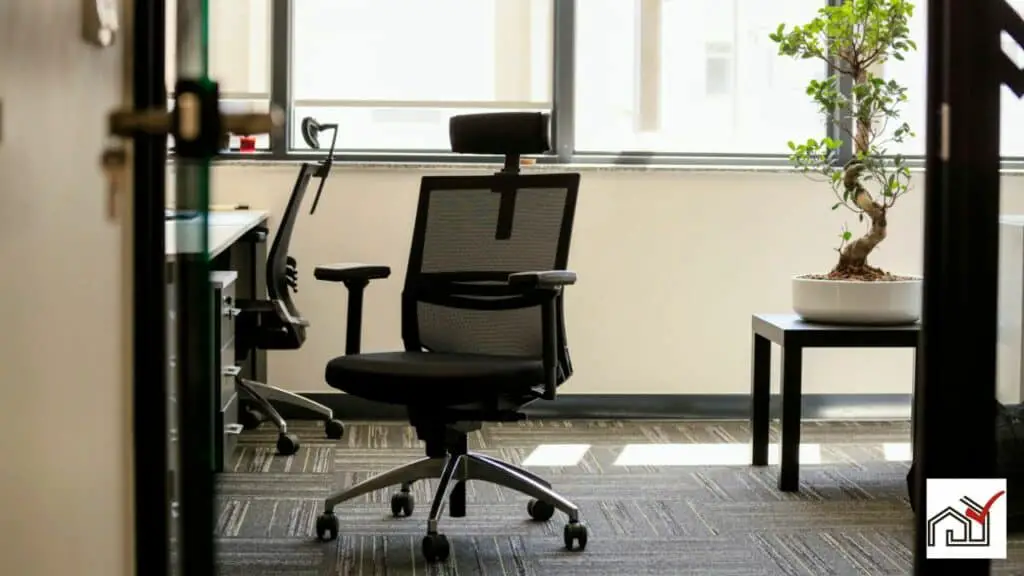When choosing a desk for a home or professional space, consider the thickness of the desk top. The thickness impacts the desk's look, stability, and lifespan.
A top that's too thin might not be durable enough, while a very thick top can be unwieldy. Desk tops typically vary from 0.75 inches to 1.5 inches in thickness, offering a balance of sturdiness and functionality. Desks meant for heavier use, such as drafting or executive desks, may have tops up to 2 inches thick or more.
Your selection should depend on the desk's purpose, the weight it needs to support, and how it fits into the room's design.
Importance of Desk Thickness
Desk thickness is an important factor in the durability, function, and appearance of office desks. The thickness affects the desk's weight capacity and resistance to bending or warping. Standard desk tops are typically 18mm to 25mm thick, which provides a good balance of strength and affordability.
Thicker desk tops, usually over 25mm, can support heavier loads and are better for heavy equipment or wall-mounted installations. They are more resistant to bending and maintain their shape better, especially for long desks without additional support.
The thickness of a desk also influences its aesthetic. Thicker tops give a sense of sturdiness and durability, and allow for more detailed edge designs. In contrast, thinner tops are often associated with sleek, contemporary styles and can be more cost-effective.
When choosing a desk, it is important to consider both the practical needs and the desired look, as the thickness will impact the desk's weight capacity, longevity, and style.
Desk Material Considerations
When choosing a desk, it's important to consider the material of the top, as it affects the desk's durability, maintenance needs, and look. The type of wood is important, as different woods have different appearances and strengths.
Solid wood is strong and comes in varying thicknesses from 18mm to over 40mm. Thicker tops can support more weight and are good for heavy use. Hardwoods like oak or maple are more expensive but are very durable and resistant to damage, suitable for desks that will be used frequently or hold heavy items. Softer woods might need extra protection or a thicker top for similar durability.
Hardwood plywood is a more affordable option that still offers the look of solid wood. It typically ranges from 15mm to 25mm in thickness and can be made stronger with additional support from frames or by layering.
The choice of material and thickness should match how the desk will be used and the preferred style to ensure it meets both practical and aesthetic needs in the workspace.
Ideal Thickness for Stability
The optimal thickness for a stable desk top generally ranges from 18mm to 25mm, varying with the material and the desk's use. This thickness range can support common items like computers, books, and office supplies. For solid wood desks, a 25mm top is preferred for its robustness, especially on larger desks with heavier loads. For smaller desks, an 18mm top often suffices, offering a balance between stability and cost.
For plywood desks, a minimum of 3/4 inch (19mm) thickness is advisable. Hardwood plywood is preferred due to its finish and resistance to damage, enhancing desk stability. Adding a 2×2 frame underneath the plywood improves strength, preventing sag and providing a secure point for attaching legs.
Strength can be further increased by laminating layers of plywood, adding solid birch edge banding, or using angle iron supports beneath the table top. These methods enhance weight support, durability, and the desk's lifespan.
The chosen thickness and support methods should match the expected load and usage. Wood type, desk span, and the use of middle braces are crucial in preventing desk sag and ensuring a stable work surface.
Design and Aesthetic Impact
Material thickness affects both the strength and the appearance of a desk. Designers need to choose the right thickness to match the desk's intended style, such as minimalist or traditional.
Heavier wood, often over 40mm, suits statement furniture that looks durable and allows for detailed customizations like leather insets or carved edges, often seen in executive desks.
Lighter wood, around 18mm, is suitable for modern, simple designs that are budget-friendly and space-saving.
Plywood thickness varies and influences the desk's sturdiness and look; thicker plywood feels more robust like solid wood, while thinner plywood is flexible and economical for modern styles.
The choice of thickness is important for the desk's visual impact and functionality in its intended setting.
Functionality and Ergonomics
The thickness of a desk top affects both ergonomics and functionality. Thicker tops offer greater stability and comfort, suitable for supporting heavier equipment without bending or shaking. This stability is critical for precise tasks like writing or drawing. A thick top, when properly supported by the desk legs, ensures the desk remains stable even when pressure is applied or when it's in use.
To prevent sagging, a 2×2 frame can be added underneath a plywood top, which maintains the desk's functionality and ergonomic support over time. This is beneficial for individuals who work at their desks for extended periods.
Customizing desk top size and thickness can optimize the balance between its functionality and ergonomic comfort, catering to an individual's particular needs. When designing a desk, it's important to consider the weight it needs to support, its resistance to bending, and its overall longevity to create a surface that effectively combines function with ergonomic design.
Maintenance and Longevity
A thicker desk top typically provides stability and comfort and requires less maintenance, leading to a longer lifespan for the furniture. Thicker wood, like 23mm or 25mm, is more resistant to damage such as impacts and scratches, making it a good choice for durability.
For maintenance, a thicker desk top can handle stronger cleaning and refinishing methods. It can be sanded to remove scratches or stains without damaging the wood, helping to keep the desk looking new longer.
When selecting a desk top thickness, consider the wood type, how the desk will be used, and the desk's environment. A very thick top may increase costs without adding value.
Construction methods can also improve durability. For example, adding a 2×2 frame underneath a plywood top can prevent sagging. Gluing and screwing multiple plywood sheets together or reinforcing the edges with hardwood can also enhance the desk's strength.
The right combination of thickness, construction, and material quality will contribute to the desk's durability and minimal maintenance needs.





